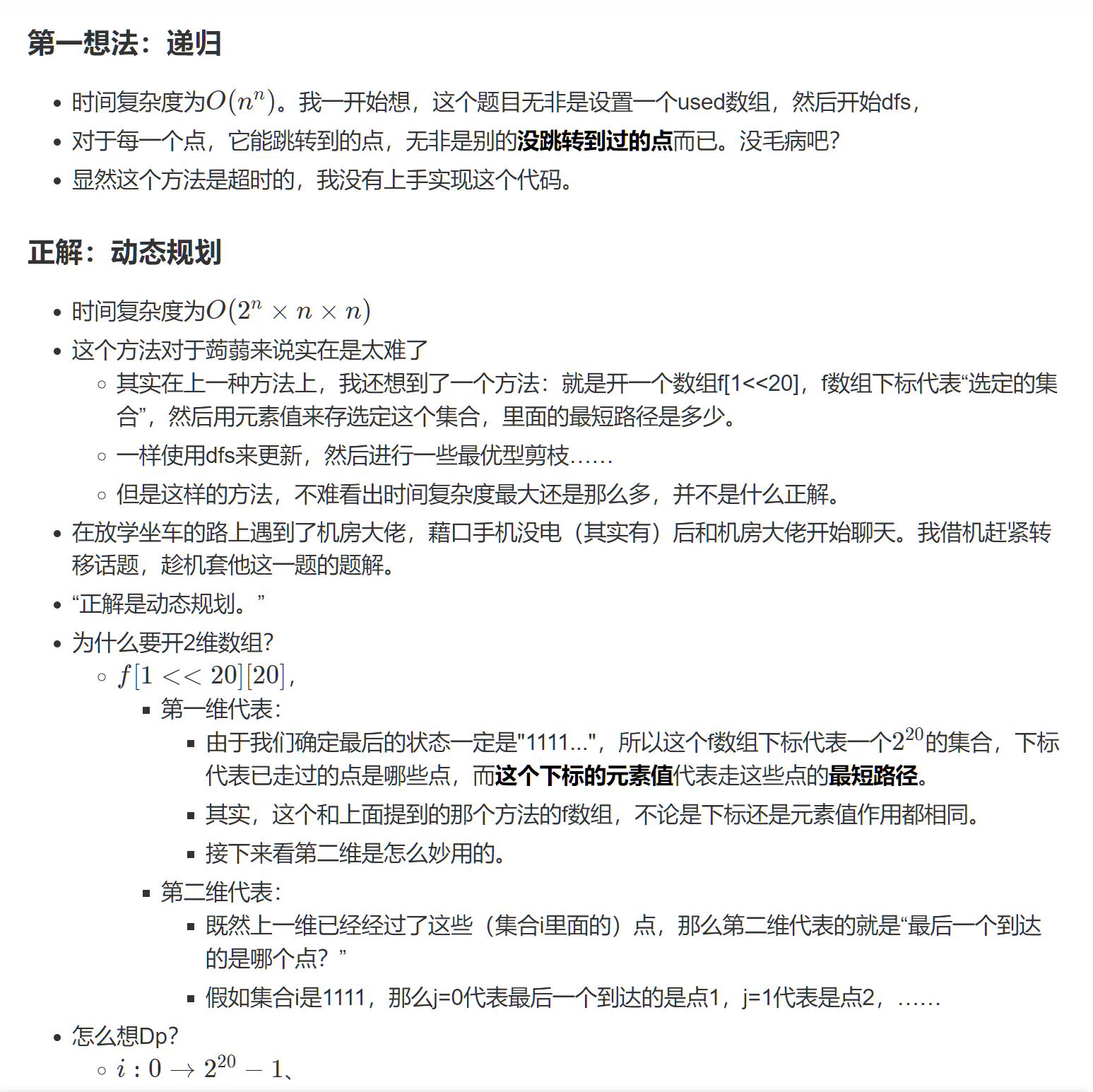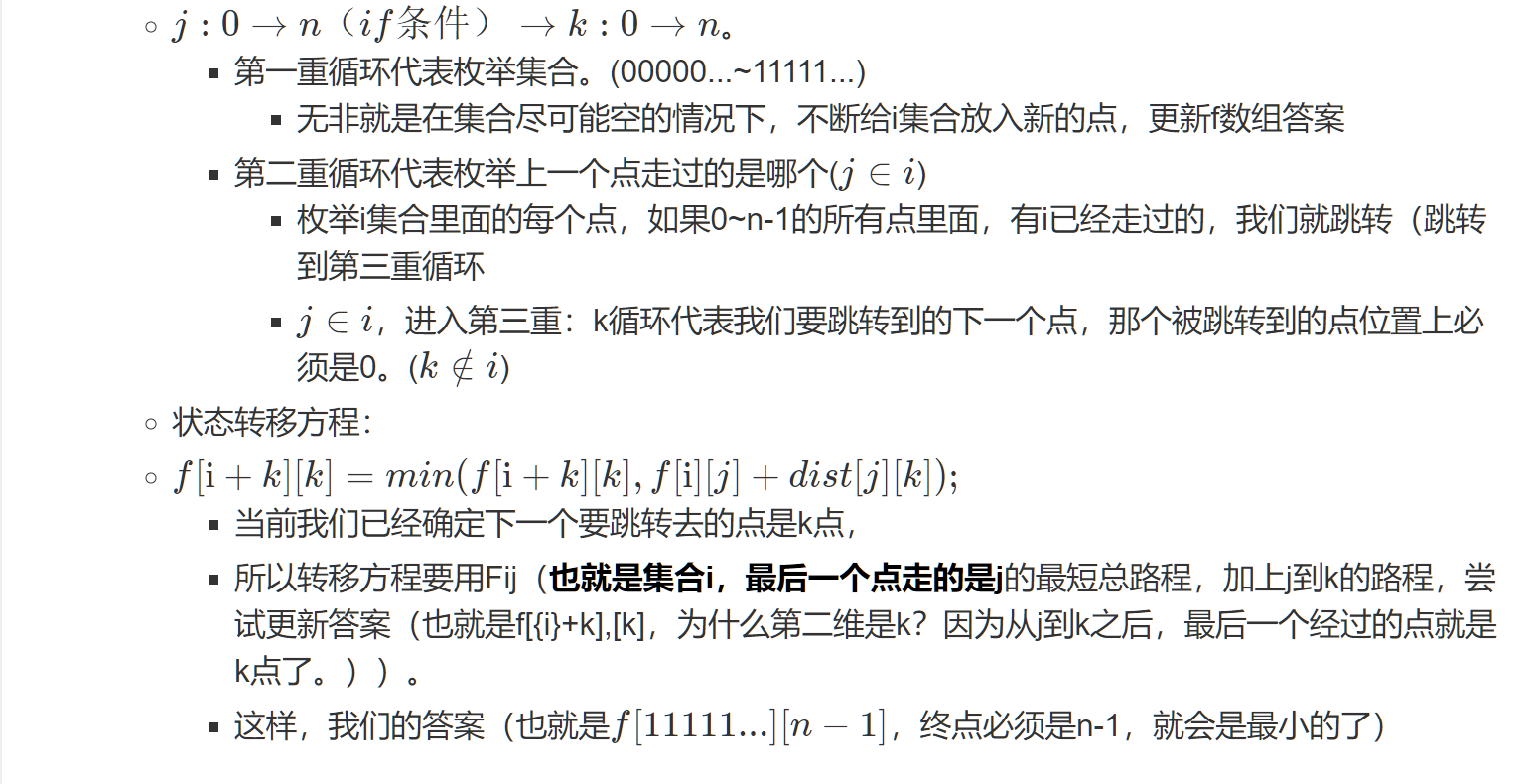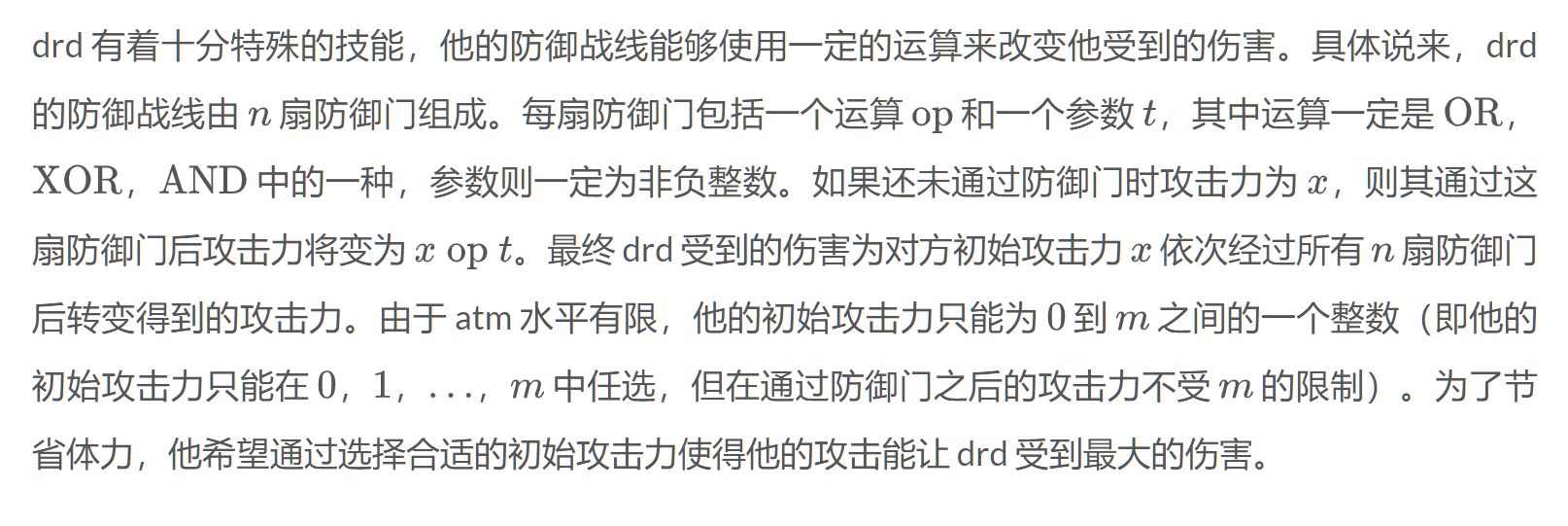0x01 基本算法-位运算
A题:a^b
https://ac.nowcoder.com/acm/contest/996/A
题目描述
求 a 的 b 次方对 p 取模的值,其中 0 <= a,b,p <= 10^9
输入描述:
三个用空格隔开的整数a,b和p。
输出描述:
一个整数,表示a^b mod p的值。
实例:
输入: 2 3 9
输出: 8
思路:
这道题是要先算出a的b次幂再对其结果进行求模(取余),因为b最大可为1e+9,按普通做法来做时间复杂度就太大了,显然这样过不了题,
能快速算a的b次幂,就能减小时间复杂度,快速幂就是一种不错的方法。
什么是快速幂:
快速幂是一种简化运算底数的n次幂的算法,理论上其时间复杂度为 O(log₂N),而一般的朴素算法则需要O(N)的时间复杂度。简单来说快速幂其实就是抽取了指数中的2的n次幂,将其转换为时间复杂度为O(1)的二进制移位运算,所以相应地,时间复杂度降低为O(log₂N)。
代码原理:
以 \(a^{13}\) 为例,
先把指数13化为二进制就是1101,把二进制数字1101直观地表现为十进制则是如下的等式:
\[13 = 1 * (2^3) + 1 * (2^2) + 0 * (2^ 1) + 1 * (2^0)
\]
这样一来 \(a^{13}\) 可以如下算出:
\[a^{13} = a ^ {(2^3)} * a ^ {(2^2)} * a ^ {(2^0)}
\]
完整AC代码如下:
#include<bits/stdc++.h>
using namespace std;
typedef long long ll;//将long long类型取个别名:ll类型,为了方便
int power(int a, int b, int mod) {
ll ans = 1 % mod;
for (; b; b >>= 1) {
if (b & 1) ans = ans * a % mod;
a = (ll)a * a % mod;//显式转化为ll类型进行高精度计算,再隐式转化为int
}
return ans;
}
int main() {
//freopen("in.txt", "r", stdin);
ios::sync_with_stdio(false), cin.tie(0);
int a, b, mod;
cin >> a >> b >> mod;
cout << power(a, b, mod) << endl;
}
B题:Raising Modulo Numbers
与上面A题写法一样
typedef long long ll;
int _;
// 稍微优化下上方代码:update 21/01/28
ll qpow(ll a, ll b, ll mod) {
ll ans = 1;
a %= mod;
for (; b; a = a * a % mod, b >>= 1)
if (b & 1) ans = ans * a % mod;
return ans;
}
int main() {
// freopen("in.txt", "r", stdin);
ios_base::sync_with_stdio(false), cin.tie(0);
ll M, N;
for (cin >> _; _--;) {
cin >> M >> N;
ll a, b, ans = 0;
while (N--) {
cin >> a >> b;
ans = (ans + qpow(a, b, M)) % M;
}
cout << ans << endl;
}
}
C题:64位整数乘法
链接:https://ac.nowcoder.com/acm/contest/996/C
思路:
类似快速幂的思想,把整数b用二进制表示,即
\[b = c_{k - 1}2^{k - 1} + c_{k -2}2^{k - 2} + ... + c_02^0
\]
typedef long long ll;
int main() {
//freopen("in.txt", "r", stdin);
ios::sync_with_stdio(false), cin.tie(0);
ll a, b, p; cin >> a >> b >> p;
ll ans = 0;
for (; b; b >>= 1) {
if (b & 1)ans = (ans + a) % p;
a = (a << 1) % p;
}
cout << ans << endl;
}
⭐D题:最短Hamilton路径
链接:https://ac.nowcoder.com/acm/contest/996/D
解题思路


AC代码:
#define ms(a,b) memset(a,b,sizeof a)
int e[21][21], b[1 << 21][21], n;
int main() {
//freopen("in.txt", "r", stdin);
ios::sync_with_stdio(false), cin.tie(0);
cin >> n;
for (int i = 0; i < n; ++i)
for (int j = 0; j < n; ++j)
cin >> e[i][j];
ms(b, 0x3f); b[1][0] = 0;
for (int i = 0; i < 1 << n; ++i)
for (int j = 0; j < n; ++j) if (i >> j & 1)
for (int k = 0; k < n; ++k) if (~(i >> k) & 1)//if ((i ^ 1 << j) >> k & 1)
b[i + (1 << k)][k] = min(b[i + (1 << k)][k], b[i][j] + e[j][k]);
cout << b[(1 << n) - 1][n - 1] << endl;
}
⭐例题:[NOI2014]起床困难综合征
题意:

贪心从高位到低位枚举,检验当前位在初始值为\(0\) 情况下的答案是否可以为\(1\) ,如果不能则检验当前位初始值能否为 \(1\),并检验当前位在初始值为 \(1\) 情况下的答案是否可以为 \(1\)。
int n, m, x;
string str;
pair<string, int> a[100005];
int work(int bit, int now) { // 用参加的第 bit 位进行n次运算
for (int i = 1; i <= n; ++i) {
int x = a[i].second >> bit & 1;
if (a[i].first == "AND")
now &= x;
else if (a[i].first == "OR")
now |= x;
else
now ^= x;
}
return now;
}
int main() {
ios_base::sync_with_stdio(false), cin.tie(0);
cin >> n >> m;
for (int i = 1; i <= n; ++i) {
cin >> str >> x;
a[i] = make_pair(str, x);
}
int val = 0, ans = 0;
for (int bit = 29; bit >= 0; bit--) {
int res0 = work(bit, 0), res1 = work(bit, 1);
if (val += (1 << bit) <= m && res0 < res1)
val += (1 << bit), ans += (res1 << bit);
else
ans += (res0 << bit);
}
cout << ans << "\n";
return 0;
}



 浙公网安备 33010602011771号
浙公网安备 33010602011771号